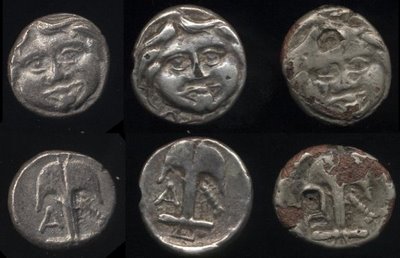Here is the description of a small electrum coin from Imhoof-Blumer's 1883 book,
Monnaies Grecques page 465:
35. El. 10m. Gr. 1,965, limée. – Tête diadémée d’Alexandre le Grand? à g.
Rx. Moissonneur, à dr., dans le même costume, se baissant pour couper le blé avec la faucille. Devant lui cinq, derrière lui trois épis debout. Cab. de France. Pellerin, Rois p. 208, vign. Rec. III, p. 3, pl. 86; Eckhel, D. N. V. IV, p. 25; Mion VI, 34, 269; Lenormant, Rois Grecs, p. 160, pl. LXXXI, I.
Imhoof-Blumer is describing uncertain coins of Asia Minor.
In English, a 1.97g electrum coin, obverse Hd. of Alexander the Great facing left, reverse "Harvester" facing r., in the same costume (short chiton with pointed bonnet), bending down to cut corn with sickle. In front of him five, behind him three ears upright.”
The coin isn't pictured in Imhoof-Blumer's book, and because it is uncertain I don't know what mint to look under in more recent books for a picture. I don't know what the word "limée" means.
Anyway, it seems odd to me that an electrum coin would feature Alexander III. Does anyone recall if this coin type ever earned a more reasonable attribution? I searched ISEGRIM for electrum and gold coins but with people on the reverse but didn't find any with sickle or wheat.

